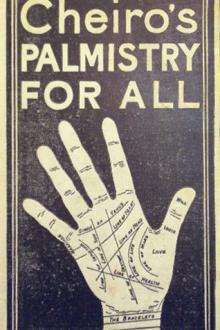The Diary - Samuel Pepys (red white and royal blue hardcover txt) 📗

- Author: Samuel Pepys
Book online «The Diary - Samuel Pepys (red white and royal blue hardcover txt) 📗». Author Samuel Pepys
A comedy by James Shirley, first published in 1631. Reproduced in 1667 as Love Tricks, or the School of Compliments. ↩
“Whereas we are informed that diverse persons doe rudely presse and with evill language and blowes force their way into the two theatres without paying the prices established,” therefore the king declares such proceedings unlawful, “notwithstanding their pretended priviledge by custom of forcing their entrance at the fourth or fifth act without payment.”
Records of the Lord Chamberlain’s Office, December 7th, 1663, quoted in Lowe’s Betterton, p. 24↩
Andrew Marvell, who died in 1678, M.P. for Hull, is said, but erroneously, to have been the last member that received wages from his constituents; others, his contemporaries, maintained the right, and suffered their arrears to accumulate, as a cheap resource at the next election. Marvell more than once, in his correspondence, speaks of members threatening to sue their boroughs for pay (Coleridge’s Northern Worthies, p. 61). A case is noticed by Lord Campbell, in his Life of Lord Nottingham, where the M.P. for Harwich, in 1681, petitioned the Lord Chancellor, as that borough had failed “to pay him his wages.” A writ was issued “De expensis Burgensium levandis.” Lord Campbell adds, “For this point of the People’s Charter [payment of members of Parliament] no new law is required” (Lives of the Lord Chancellors, vol. iii, p. 420). —B. ↩
George Fournier, a Jesuit, born at Caen in 1569, was the author of several nautical works. His chief one, L’Hydrographie, was published at Paris in folio in 1663. A second edition appeared in 1667. ↩
Alvarez Semedo’s History of China, translated by a Person of Quality. Lond., 1655, fol. —B. ↩
Beaumont and Fletcher’s play, first acted in 1632, and published in 1652. ↩
Mary Davis (see note 3280). ↩
Mrs. Weaver was one of the actresses of the King’s Company. ↩
Sedley never wrote any play with this title, or, perhaps, the name was altered. The piece here referred to seems to be The Mulberry Garden (see May 18th following), which, on representation, does not seem to have answered Pepys’s expectations. It met, however, with success, from the notoriety or fashion of the profligate author. —B. ↩
See February 20th, 1667–68. ↩
L’Escole des Filles, by Helot, was burnt at the foot of the gallows in 1672, and the author himself was burnt in effigy. ↩
Puttana errante, written by Pietro Aretino, but falsely attributed to Maffeo Veniero, was published at Venice in 1531, and reprinted in Poesie da fuoco di diversi autori, 1651. It was translated into French as La P … errante, ou Dialogue de Madelaine et de Julie, traduction du dialogue Italien de Pierre Aretin. ↩
Humphrey Henchman, Prebendary of Salisbury, 1623; Bishop of Salisbury, 1660–63; Bishop of London, 1663–75. ↩
The claims of owners, after the fire of London, as settled by the Commissioners, are in the British Museum. —B. ↩
Henrietta Maria Cornwallis, whose brother Charles, third Lord Cornwallis (called le beau Cornwallis), afterwards (1688) became the second husband of the Duchess of Monmouth. —B. ↩
See note 3689. ↩
Moll Davis lived in Suffolk Street from 1667 to 1676; in the latter year she removed to St. James’s Square to a house now absorbed in the building of the Army and Navy Club. ↩
Richard Gibson, so frequently noticed by Pepys, was a clerk in the Navy Office. His collection of papers relating to the navy of England A.D. 1650–1702, compiled, as he states, from the Admiralty books in the Navy Office, are in the British Museum. —B. ↩
Sir Robert Holmes. ↩
Captain William Jenkins. ↩
Francis Talbot, eleventh Earl of Shrewsbury, who died of his wounds March 16th following. ↩
Of Laycock Abbey, Wilts, a Gentleman of the Privy Chamber and M.P. for Knaresborough. He was descended from John Talbot, second Earl of Shrewsbury, who fell at Northampton Fight in 1640. Sir John is said to have been the first person who received Charles II in his arms on that monarch’s landing at Dover, after the Restoration, on which occasion he was knighted. Le Neve, writing in 1696, calls him “a very fine, strong old gentleman.” He lived to a great age, serving till after 1700. His two sons died young; and his two daughters and co-heirs—
Anne, married Sir John Ivory, Bart.
Barbara, married Henry Yelverton, Lord Grey de Ruthyn, and Viscount Longueville.
—B. ↩
Eighth son of Henry Frederick Howard, Earl of





Comments (0)